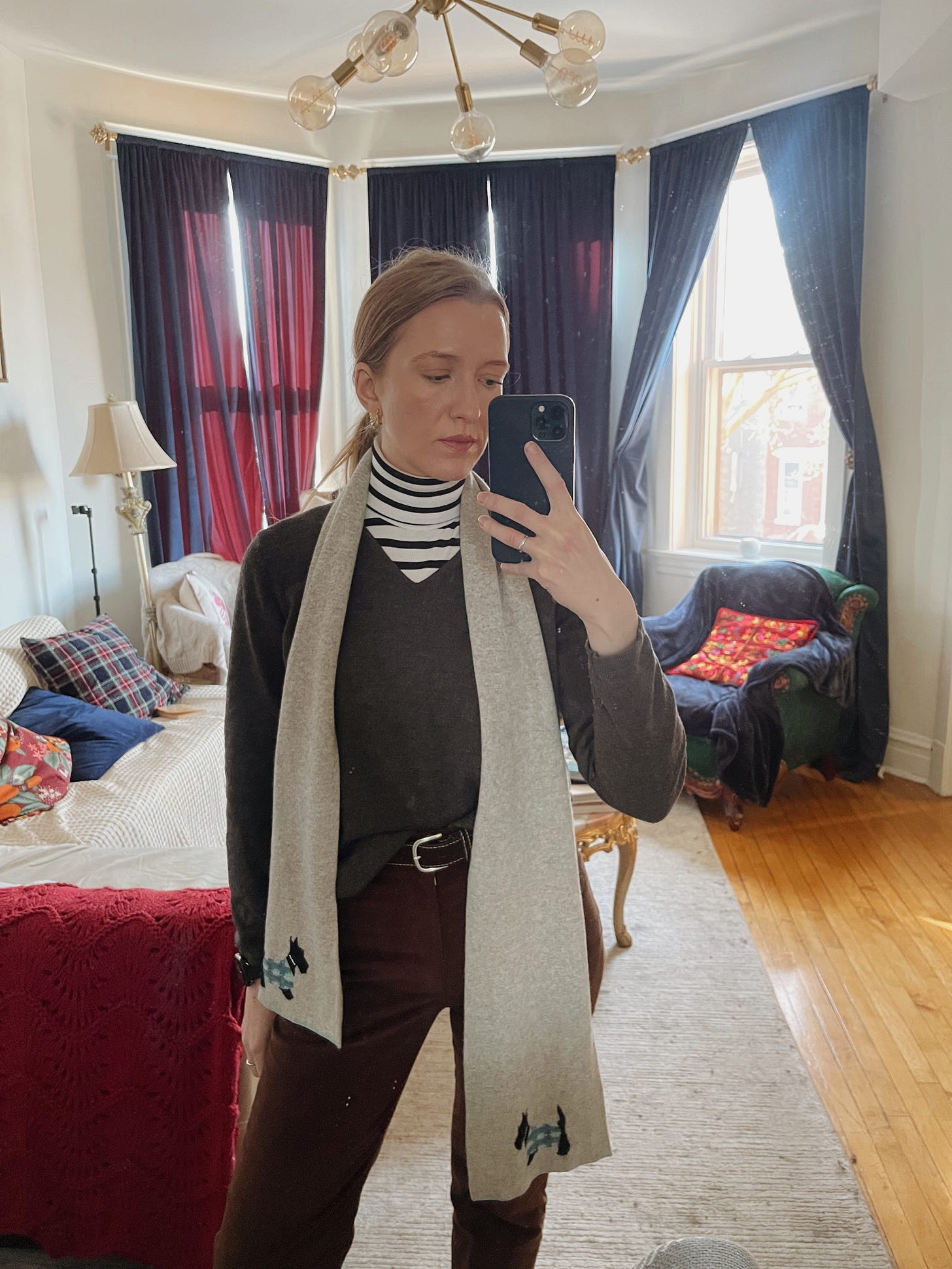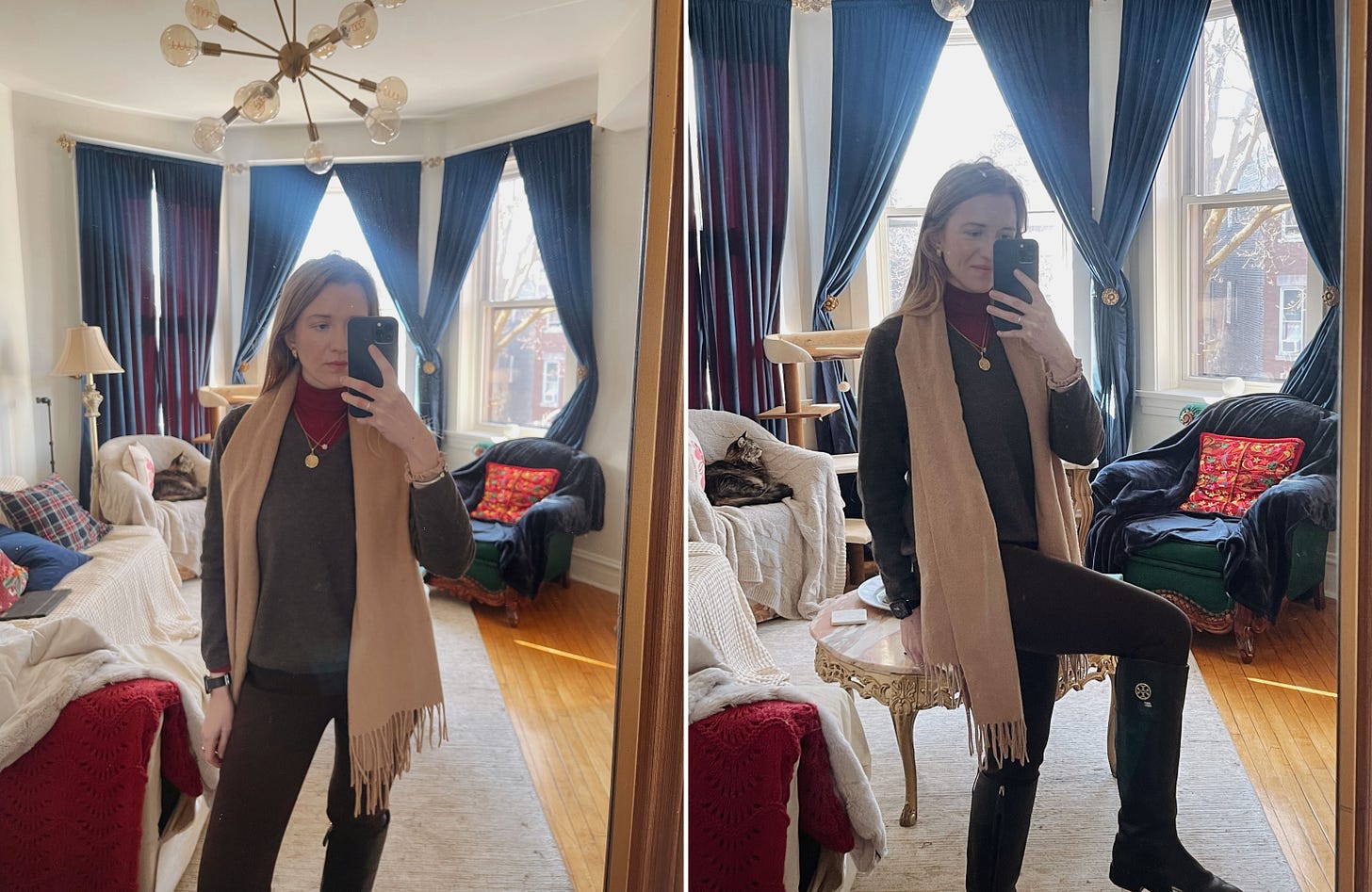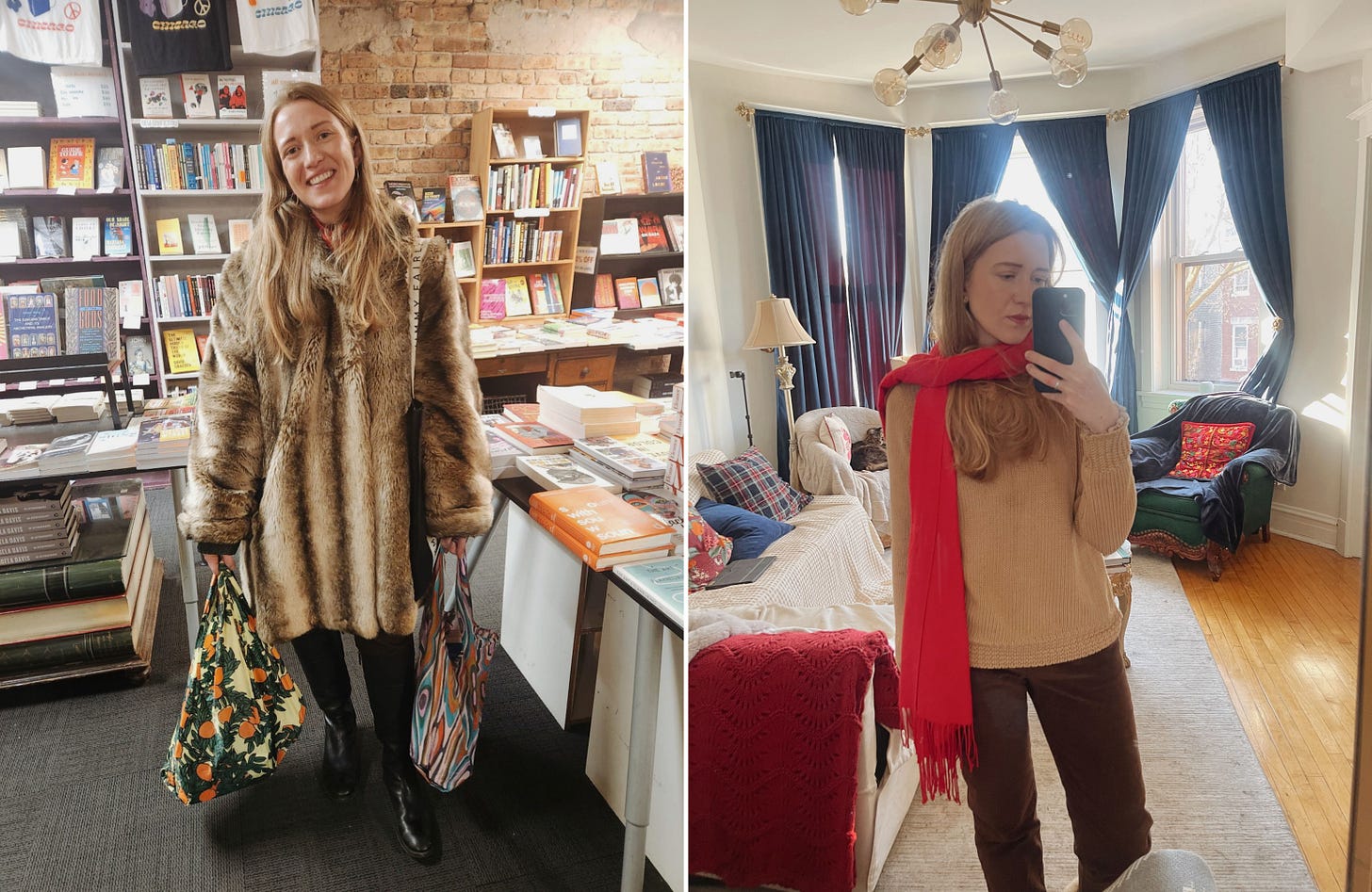curated finds that inspire, delight, and enrich
I’ll admit, Dinner for Vampires: Life on a Cult TV Show (while also in an actual cult) by Bethany Joy Lenz wasn’t a title I would have instinctively plucked from the shelf. The memoir, penned by the former One Tree Hill star, was this month’s selection for a new book club I’ve joined with friends. At first glance, I was skeptical. Celebrity memoirs aren’t typically my genre of choice, especially from someone associated with a series I’d never seen. But we read broadly around here, and so I dove in. What began with measured curiosity quickly turned into complete absorption. Within 36 hours, I’d finished the book—a testament to its accessibility and the gripping narrative. Lenz’s account of how she found herself entangled in a cult is as fascinating as it is unsettling. The slow, almost imperceptible unraveling of her life is a cautionary tale that lingers long after the final page. That said, the cover design leaves much to be desired. A more understated approach would have done the story greater justice.
The standout revelation from watching A Complete Unknown, the recent Bob Dylan biopic, was a newfound appreciation for Joan Baez. Despite having spent my high school years immersed in Dylan and other folk greats, Baez had somehow eluded me. As I’ve now discovered, her music is nothing short of extraordinary. Curiosity piqued, I sought out Joan Baez: I Am A Noise, a 2023 documentary that offers an intimate portrait of this singular artist. Baez is a complex and deeply fascinating figure—equally inspiring for her trailblazing music career and her decades of activism, including her unforgettable performance at the 1963 March on Washington. I streamed the documentary for free via Kanopy, the library’s streaming platform, and found it a thoroughly enriching way to spend a couple of hours immersed in Baez’s world. For anyone unfamiliar with her legacy, it’s an excellent place to start.
A Podcast of One’s Own, hosted by former Australian Prime Minister Julia Gillard, offers a sharp and insightful look at women’s leadership and the persistent barriers to gender equality. Featuring candid conversations with trailblazers across politics, business, and the arts, the podcast balances personal stories with actionable insights. Gillard’s warm yet incisive interviewing style makes each episode a compelling listen. Recent highlights include an inspiring discussion with Elif Shafak on storytelling, freedom of expression, and the global water crisis, and a powerful interview with Domtila Chesang, who is leading efforts to end female genital mutilation in Kenya. Of course, Gillard’s own legacy is underscored by her unforgettable “misogyny speech” from 2012—a defining moment in modern political discourse.
I will not be lectured about sexism and misogyny by this man; I will not.....If he [Abbott] wants to know what misogyny looks like in modern Australia, he doesn't need a motion in the House of Representatives, he needs a mirror. That's what he needs.
— Gillard
I approached Goop products with a healthy dose of skepticism. Yet, every one I’ve tried has proved remarkably effective. Take the Microderm Instant Glow Exfoliator, for instance. I received a sample during a recent visit to Credo, and have since savoured every last speck of that little jar. Used three times a week in the shower, it leaves my skin feeling noticeably softer and looking refreshed—precisely the results I hoped for. Yes, it’s undeniably pricey (suggestions for alternatives welcome), but its effectiveness might justify the splurge. It’s streamlined my skincare routine by replacing multiple products, aligning perfectly with my preference for simplicity without compromising results. If you also prioritize fewer, high-performing products, it might be worth considering.
London-based singer-songwriter Chloe Qisha brings a quiet sophistication to her music, blending dreamy pop with minimalist electronic influences. With a classical piano background and a knack for storytelling, her debut EP is a polished, atmospheric mix of introspection and subtle playfulness. For those in search of refined yet emotionally resonant sounds, Chloe Qisha is a talent worth noting. I think “I Lied, I’m Sorry” is my current favourite.

I’ve always been an avid second-hand shopper. From the age of 10, I would save my pocket money for trips to local charity shops, often returning with a mix of treasures—and plenty of questionable finds. Over time, my taste has evolved, but the thrill of uncovering something unique—a perfect addition to my wardrobe—has only grown. Until early 2022, my second-hand pursuits were limited to vintage shops, thrift stores, and flea markets. Then, I ventured into second-hand apps, and everything changed.
With filters for size, natural fabrics, and excellent condition, I suddenly had access to thousands of options—all at a fraction of retail prices. (At least half my wardrobe is Banana Republic and Tory Burch, despite never buying anything new from these stores.) At first, it felt justifiable. I had transitioned to working four days in an office and needed appropriate clothing. My personal style was shifting as I approached 30, and my body had changed more than once.
But by the end of last year, the constant scrolling and purchasing started to feel overwhelming. Yes, that blouse was lovely, but my wardrobe was overflowing, and a great deal didn’t mean it automatically belonged in my closet. I deleted the apps from my phone and limited browsing to my desktop, marking the start of a more mindful approach to shopping.
(As I write this, a few future posts come to mind: 1) how I rebuilt my wardrobe in my 30s using second-hand apps, 2) why too much second-hand shopping can undermine your personal style, and 3) when buying the perfect new item outweighs snapping up ten second-hand pieces that aren’t quite right. Let me know if any of these pique your interest!)
NO-BUY MONTHS
This shift in mindset led me to one of my 2025 goals: four no-buy months throughout the year—one per quarter (January, April, July, October).
The goal? To break the cycle of constant consumption, even when it’s something as tempting as a pristine second-hand Theory blouse for $32. It’s about hitting pause on new acquisitions and shifting focus to appreciating what I already own. It’s an exercise in contentment—wearing and celebrating the pieces I’ve thoughtfully curated over time.
I always notice, during my seasonal wardrobe switches, how many beloved items go unworn or worn only a couple of times, leaving me with a pang of regret. Why add more when there’s so much already waiting for its moment?
Another reason: reclaiming time. Instead of scrolling endlessly, bookmarking wishlists, and planning the next purchase, I want to redirect that energy to (almost) anything else. This extends beyond clothing to home items—a category also included in my no-buy months. Too often, I’ve walked through our apartment focusing on upgrades or additions, berating myself for delays and not sorting something out, rather than practicing gratitude for the space I’ve already nurtured and the effort and money invested.
Ultimately, it’s about celebrating the present—the wardrobe and home I’ve so carefully built up until now—and cultivating a mindset of contentment and gratitude.
LESSONS FROM NO-BUY MONTH #1
As the first of my no-buy months comes to a close, I can confidently say: it was remarkably easy. Not once did I find myself without something appropriate to wear for any activity, event, or weather condition.
Midway through, when Chicago’s sidewalks turned into ice rinks, I convinced myself I needed another pair of short, flat winter boots—something practical for the office, unlike my bulky snow boots. While I wasn’t entirely wrong, I made do by wearing my flat leather riding boots nearly every day (11 times this month, to be exact). Paired with two trousers that tucked in nicely (one worn eight times, the other three), they served me well. Now that the ice has melted, I’m glad I resisted. I also could’ve just worn my snow boots and changed shoes at work…
Here’s what I’ve learned for myself:
1. You already own what you think you need. Often, the alternative isn’t even a compromise—just a clever rediscovery.
2. A month flies by. Before I know it, the “need” has passed and the weather has changed.
3. You don’t even touch a quarter of your wardrobe in a month.
4. You genuinely enjoy your wardrobe. It feels good to reappreciate what I’ve built.
5. Simplicity wins when life gets busy. I used to revel in crafting endless outfit combinations. Now, my days are fuller, and I find comfort in a small rotation of favourites every few weeks.
It’s been a refreshing exercise in restraint and rediscovery—a reminder of how much I already have and how little I actually need.

THE MONEY SIDE
Predictable but nonetheless important: a no-buy month is a surefire way to curb expenditures. While I generally stay within my monthly shopping budget, my focus for 2025 is to redirect spending toward other priorities—saving for fewer, higher-quality items, funding travel and experiences, bolstering long-term savings, and contributing to donations and mutual aid.
Between August and December 2024, I spent $2,491.62 on clothing, averaging just under $500 per month. For some, this may seem extravagant; for others, it is a modest sum. For me, it feels slightly higher than necessary, especially given that much of what I purchase is secondhand. That said, a portion of this total represents intentional investments in higher-priced pieces from small designers—items chosen for their quality, craftsmanship, and ethical production. Ideally, I’d like to strike a balance: a few thoughtfully selected, enduring pieces each season, rather than an ongoing stream of “nice to have” purchases.
The no-buy months are not just about restraint but about recalibrating where and how I allocate resources. A step toward aligning spending with broader priorities and values.
THE LOW-BUY YEAR
In addition to the four no-buy months, the rest of the year is going to shift to a low-buy approach—a decision driven by two factors. First, I genuinely don’t need much, and second, I want to prioritize saving and investing as much as possible, given the precarious economic landscape and my distrust of this new administration. Any purchases I do make will be even more deliberate than before, focusing on how they fit into my overall wardrobe and a commitment to continuing to prioritize local and small businesses.
In 2024, I added 81 items to my wardrobe (including non-daily jewelry and workout clothes). This year, the goal is to cap it at 12-15 items. And, for every item I bring in, I want to take two items out. As I mentioned, I already primarily shop secondhand (my closet is 67% secondhand), so secondhand items are included in that number.
We will see how it goes, and I will do monthly check-ins to keep myself accountable and maybe give you some ideas to incorporate into your wardrobe or consumption habits. You can find some wardrobe resolutions ideas and a calendar to download and write them on in this post!
a pause to reflect, a moment to savor
Obviously, the question has to be - when it comes to your wardrobe and shopping habits, how are you approaching it this year? What steps do you want to take to ensure it aligns with your overarching values and priorities?
Would love to hear your thoughts!
Jennifer
xxx










I love this post! I'm trying to reduce my # of clothes bought each year from around 40 to 1-2 pieces a month. I've been trying to give myself a week to think about purchases instead of impulsively buying a new item online after just a few days, or buying several thrifted items at once.
“ As I write this, a few future posts come to mind: 1) how I rebuilt my wardrobe in my 30s using second-hand apps, 2) why too much second-hand shopping can undermine your personal style, and 3) when buying the perfect new item outweighs snapping up ten second-hand pieces that aren’t quite right. Let me know if any of these pique your interest!”
OMG yes to all! I struggle with these all the time. I have the same issue - many times I pick up a piece I love while second hand shopping, only to have it languish because it fits my “fantasy” wardrobe, rather than my reality. I could talk about all these over tea for hours.
Let’s raid each others closets hahah.